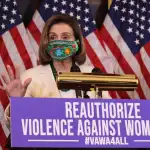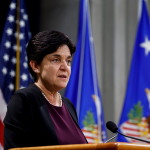In the 1990s, national politicians painted a scary picture of crime in the United States.
“We have predators on our streets that society has … in part because of its neglect, created,” then-U.S. Sen. Joe Biden said in a 1993 speech.
“They are beyond the pale, many of those people, beyond the pale,” he continued. “It’s a sad commentary on society. We have no choice but to take them out of society, and the truth is we don’t very well know how to rehabilitate them at that point. That’s the sad truth.”
In 1991, the country’s violent crime rate had reached a peak of 758.2 reported crimes per 100,000 residents. (For context, the FBI reported a rate of 380.7 violent crimes per 100,000 people in 2022.)
Biden became a prominent voice on this issue and played a key role in drafting the Violent Crime Control and Law Enforcement Act of 1994, signed by President Bill Clinton 30 years ago this month. The 356-page bill tackled assault weapons, domestic violence, incarceration and policing. Today, it’s a complicated part of Biden’s legacy.
The bill was celebrated by many advocates for enacting the Violence Against Women Act, the first comprehensive federal legislative package explicitly designed to end gender-based violence.
But it also faced wide criticism for expanding policing and harsh criminal punishments that fell hardest on Black and Brown communities. Often overlooked is the effect it had on arrests and incarceration of children and the rise of the school-to-prison pipeline. From 1990 to 2000, the proportion of children convicted of murder who were sentenced to life without parole increased from 2.9 percent to 9 percent.
The 19th interviewed nearly two dozen experts — several of whom were directly involved in drafting or negotiating the bill 30 years ago — about its legacy. They shared their perspective on where the country was before the bill passed, where we are now and where we should head next.
In the 1990s, fears about crime rates converged with a government effort to crack down on crime.
U.S. Rep. Bobby Scott of Virginia, a member of Congress since 1993: The Democratic Party was trying to toughen its political image on the crime. The fact is, most of the members were taking an emotional approach to crime, totally unrelated to any evidence and research.
Ed Chung, vice president of initiatives at Vera Institute of Justice: Mass incarceration overall has been a decades-long endeavor across the United States, and it started before the ‘94 crime bill. But in the early 1990s, crime was the national issue of the day at all levels of government. There was a dramatic increase in crime rates in the 1980s and it peaked in the early ‘90s. And so policymakers were looking to address that through legislation.
Kristin Henning, Blume Professor of Law and Director of the Juvenile Justice Clinic and Initiative at Georgetown Law: It really starts in the ’60s with the civil rights era and kids protesting. So really from the ’60s right through the ’80s, the ’90s, we sort of began to flow into this “law and order” response to children. There was a sense that young people were largely responsible for or had an outsized role to play in the increase in crime. I think by the time we get to the ‘90s, people were much more explicit that [they believed] Black children were responsible.
One of Biden’s top priorities in the crime bill was including the Violence Against Women Act, a historic provision that was largely written and driven by women both from inside the halls of Congress and in grassroots efforts across the country.
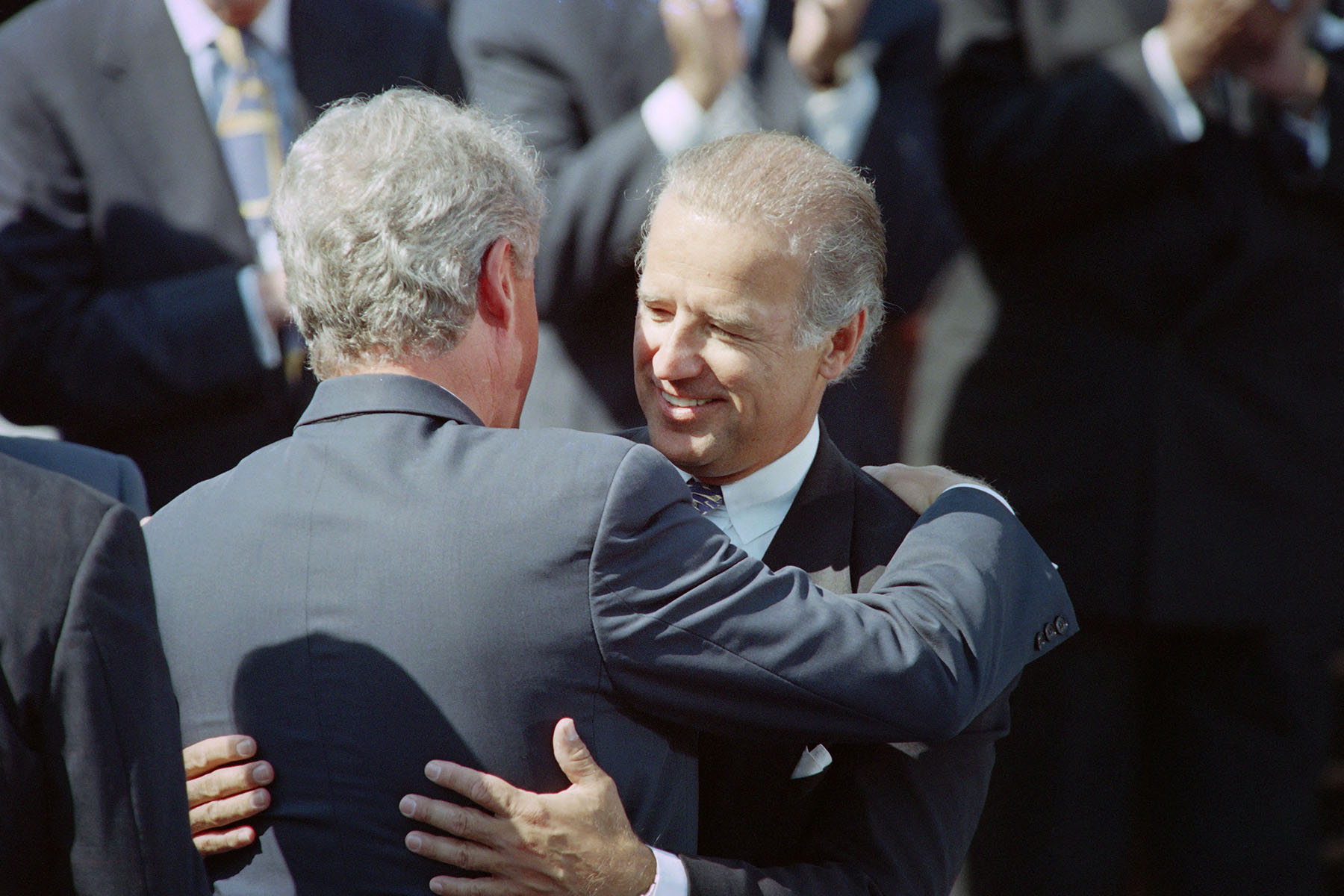
Victoria Nourse, a Georgetown University law professor and vice chair of the U.S. Commission on Civil Rights, who drafted the Violence Against Women Act as a legal staffer in the U.S. Senate: We had hearings in June of 1990 where three very brave hidden figures — no one remembers who they were — talked about being raped. The Senate Judiciary Committee at that time had never heard anything like that. But Biden treated them with great respect and could still quote the women in 2015 when I went to work for him in the White House. The law was denying the truth of their sexual assaults, it was blaming the victims, and this was something that clearly moved him.
Sally Goldfarb, a professor at Rutgers Law School who was a staff attorney at NOW Legal Defense and Education Fund: I was an attorney working primarily on family law issues back then, and I saw that family violence is a crucial issue in the lives of women and in this country. You can’t really talk about American families without talking about domestic violence. That was not a widely shared view — there was a lot of denial.
Nourse: I did not let the other drafters near [the VAWA draft] because I was worried — they were all guys. And then I started bringing in the interest groups, I needed expertise. I had taken Ruth Bader Ginsburg off the shelf, and I remember having a meeting with a lead battered women’s group and I felt like they themselves had been battered. I asked them what their wishlist was, and they didn’t think anyone would care. The last time they went up to Congress, they’d gotten trashed. They didn’t know who Biden was or why he’d care, but they liked me, so I developed relationships.
Goldfarb: [Nourse] called me to have a conversation about then-Sen. Biden’s idea for a bill to address violence against women. I ended up getting very excited and very involved. I founded a national coalition of individuals and organizations that worked together to make recommendations on the drafting of the bill and also to work on mobilizing support inside and outside of Congress.
Nourse: It was really the NOW Legal Defense Fund, they’re called Legal Momentum now, but Sally Goldfarb — she was the real force behind the force of Biden.
Goldfarb: [Nourse] was on the inside; I was on the outside. It was the first time that the federal government was proposing to take a fairly comprehensive look at violence against women and its impact on women’s equality in status in society. In the past, these issues either had not been addressed at all or were addressed through state criminal law or a few federal funding programs that were very modest.
Nourse: At the time, battered women’s shelters claimed that their major source of funding was bake sales. And there were people on the floor of the Senate in the ‘80s who say that battered women’s shelters were indoctrination centers for radical feminism or runaway wives.
Goldfarb: There was significant pushback to the idea that government should get involved in protecting women from violence, particularly violence committed by intimate partners. There were people who thought that family issues should be kept within the family. The national coalition that I founded began with just a dozen people sitting around a table in the very modest conference room at the NOW Legal Defense and Education Fund. By the time the bill was enacted four years later, there were literally hundreds of organizations and individuals who had pledged their support for this legislation, ranging from the Girl Scouts to religious denominations to health care providers, community groups, civil rights organizations.
Nourse: VAWA was first introduced in 1990 but it didn’t become popular until 1992, the “year of the woman.” It was after Anita Hill’s hearings and public sexual harassment allegations against Supreme Court Justice nominee Clarence Thomas, and a record-number of women were elected to the Senate.
Goldfarb: There were a series of hearings held on the Violence Against Women Act. At hearings held in different states by different senators, the mainstream press carried stories about the testimony given by women who had been shot by their husbands or attacked by their landlord or victimized in other ways. The impact that it had on their lives, the impact it had on their financial well-being as they lost their jobs and fled from abusive relationships. People were now reading stories about issues that might not have previously come to their attention. So VAWA became a vehicle for public education.
One of the major innovations of the Violence Against Women Act was to think about these issues in terms of their effect across social categories and not see this as an individual perpetrator and an individual victim alone, but rather as part of a social pattern.
While Republicans pushed back against VAWA, some Democrats spoke out against the bill’s increased funding toward policing, punitive juvenile justice and incarceration.
Nourse: Advocates at first weren’t happy that VAWA was part of a crime bill. And the ACLU opposed VAWA at the time because they thought it was racist. They thought it would put more Black men in jail. My answer was, “Well, what about the Black women who are the survivors?” It was a day and age when liberals thought that anything that involved crime was racist, and, you know, there is a fine line. Crime had been used by the Republicans to race bait for a very, very long time. But where were the Black women?
Hernandez Stroud, senior counsel at the Brennan Center for Justice at the New York University School of Law: The Congressional Black Caucus (CBC) supported the idea of addressing crime, but members of the CBC were critical of the 1994 bill. There were communities, Black communities, that certainly wanted to address crime, but the question was about the way in which you do that.
And so members of the CBC, while criticizing the bill, had also introduced an alternative bill that included investment in prevention and alternatives to incarceration. They devoted $2 billion more to drug treatment and $3 billion more to early intervention programs.
Rep. Scott, a member of the CBC: There were a few of us who just decided to follow the evidence and research. That pretty much put us opposed to most of the provisions in the bill. We had initiatives to try to put money into evidence-based approaches that have been shown to actually reduce crime.
But all the politics is on the side of slogans and sound bites. Slogans polled extremely well, and members of Congress are politicians trying to get elected.
The crime bill passed in the House and Senate in August 1994 and was signed into law by Clinton the next month. For the first time, through VAWA, there were federal provisions on rape and battery prevention, funding for victim services and more legal teeth in battery charges and orders of protection.
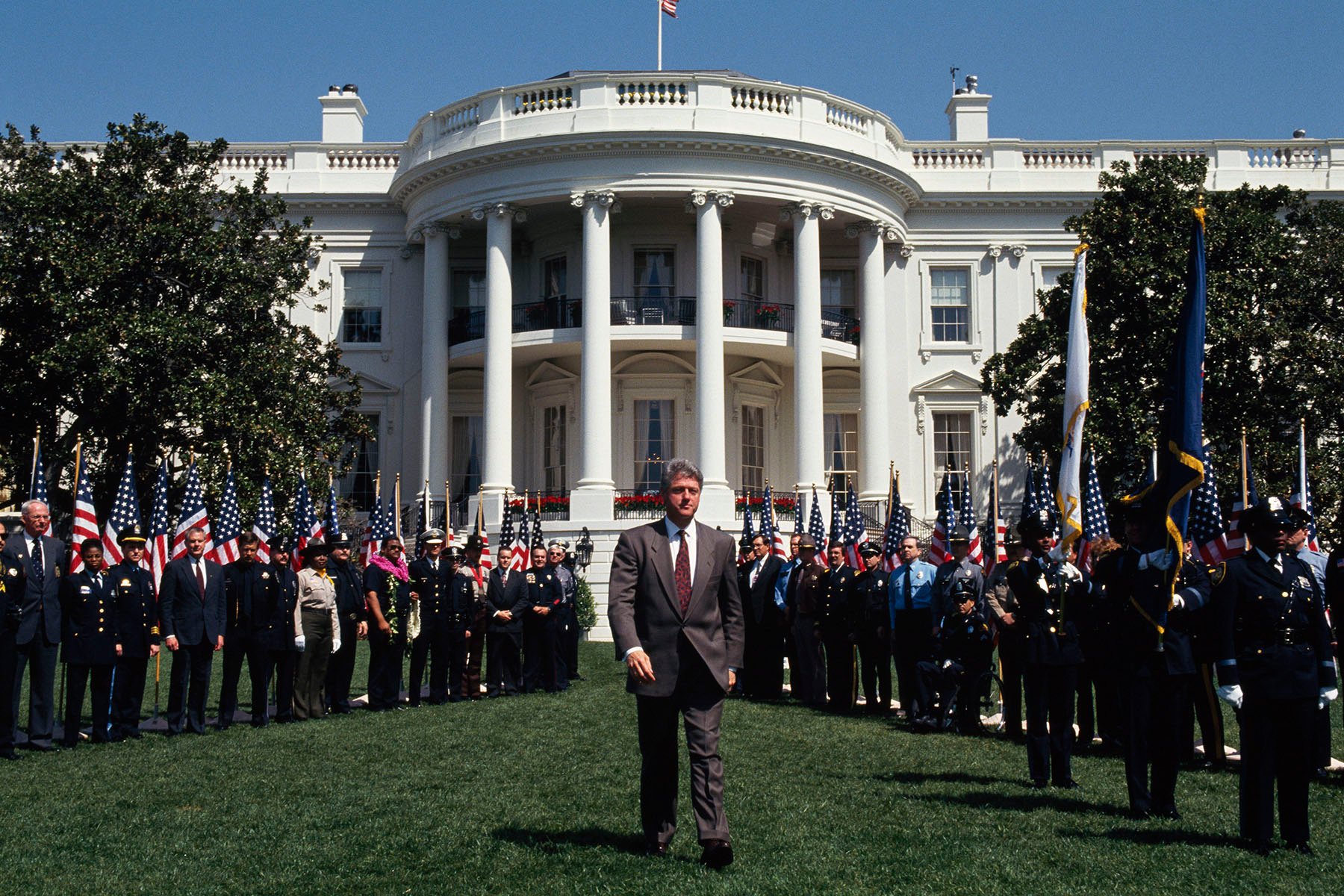
Stephanie Love-Patterson, president and chief executive of the National Network to End Domestic Violence: I was working as a sexual assault advocate at one of the hospitals in Chicago back in the 1980s. Oftentimes it takes some time for a change [like the passage of VAWA] to spread throughout communities so that people understand it. But one thing I can say from the sexual assault and domestic violence side, we advocates could more confidently tell victims what they had rights to — and that was really, really good.
Rachel Graber, vice president of government relations and advocacy at Jewish Women International, which is part of the National Task Force to End Sexual and Domestic Violence: VAWA brought together domestic violence programs, sexual assault programs and victim advocates with law enforcement and prosecutors — building a coordinated community response. So instead of having a piecemeal response where no one is talking to each other, the idea was to have a united front with everybody working together. Victims were better protected and offenders held more accountable.
Despite VAWA’s landmark protections, the crime bill’s broader impacts on incarceration had dramatic consequences for marginalized communities.
Christian Nunes, president of the National Organization for Women, one of the country’s largest feminist advocacy groups: This is the first time you really saw a huge push for guidelines to establish tracking sex offenders. That was very helpful, particularly for women and children, survivors and victims. However, many women victims of trafficking were swept into the crime bill under extreme penalties and given harsh sentences even though they were actually victims. Then we had the sex-abuse-to-prison pipeline that we see has contributed to a lot of mass incarceration for women.
Stroud: Although our incarceration was already steadily rising before the crime bill, several of its provisions, to many people, helped to accelerate incarceration. From 1970 to 1994, the rate of imprisonment had exploded 400 percent and from ’94 to 2009 — which is when incarceration was at its highest — imprisonment continued to rise, doubling.
So how did the crime bill contribute to this increase? First, it banned 19 types of semi-automatic assault weapons. It authorized the death penalty for dozens of existing and new crimes. It instituted a federal “three-strikes-and-you’re-out” provision. But, those facets were likely less pernicious than how the crime bill influenced states to increase their prison roles.
The bill granted states $12.5 billion to build prisons if they passed “truth in sentencing” laws, which required incarcerated people to serve at least 85 percent of their sentences. And so, it was this idea that the federal government was using the power of the purse to engage states in the project of incarcerating ever more people for longer periods of time.
The way that these policies defined crime, the punishments that they attach to those definitions of crime, fell hardest on communities of color.
I think that is reflected in the glaring racial disparities of our prisons when it comes to those who are behind bars. So there’s no doubt that communities of color and low-income communities were suffering disproportionately as a result of many of these policies.
Henning: It had an inordinate, outsized impact on the mass incarceration of Black youth and spawned these draconian provisions all across the country to try more children as adults at younger ages for more crimes instead of helping them in ways that would make all of us safe and would make children safe.
The 1994 crime bill itself creates the COPS program, the Community Oriented Policing Services program. That is huge at that moment because it’s creating the authority for the attorney general’s office to create grants to increase the police presence throughout communities. In 1998, the bill got amended to specify that those COPS grants could be used and should be used for schools. So the 1994 bill is so critically important because it paved the foundation for the federal funding of cops in schools.
Over the years, time and research further highlighted the far-reaching ways the crime bill shaped the U.S. justice system.
Henning: It’s really critical to understand that the 1994 crime bill literally, unequivocally, in every practical way, shifted the way we police children in schools. The way that this funding has been allocated, schools with a predominantly or disproportionately high presence of Black and Brown students are more likely to have school resource officers than White schools.
We know this to be true that more police in schools means more arrests of students. More arrests of students means more arrests of Black and Brown students. Data shows that Black girls are 3.6 times more likely to be arrested at school than a White girl. And a Black boy is 2.4 times more likely to be arrested than a White boy.
Juvenile court is supposed to be different, more rehabilitative and confidential. But when you transfer kids to adult court, they are sentenced in adult facilities. We know that sending children to adult facilities radically increases the chance that they’re going to be sexually assaulted, physically assaulted by other inmates, by guards.
We know that they’re not going to get the educational support that they need. They’re not going to get the mental health support that they need. They’re going to learn to adapt to the prison mindset in order to protect themselves. They’re more likely to be in solitary confinement.
Nikola Nable-Juris, national legal and policy director, Campaign for the Fair Sentencing of Youth: Family members are some of the most compelling and powerful advocates and voices on this issue because they can really speak to how incarcerating a child can tear a family apart and really create so many challenges that people never anticipated, because many children had never encountered the justice system before their arrest. There’s the challenges of going through court proceedings, the burden for a parent seeing your child incarcerated, the challenges in prison in terms of communication with family contact, the lack of educational opportunities.
Patrice Sulton, founder and executive director of the DC Justice Lab: What we know about the U.S. approach to policing and the U.S.’ approach to the number of people we put into prison and how long we keep them there, is that it is criminogenic — it’s actually making crime worse.
It should have been obvious that if you keep throwing kids up against the wall, if you keep throwing people into jail, at a certain point you will have destabilized a community enough that it cannot thrive. You can’t pull all the Black men out of the neighborhood, put them in cages, torture them for years, put them back and expect crime to go down. That’s not a winning strategy, although that was the prevailing wisdom at the time.
Experts also identified flaws and gaps in the protections afforded by VAWA.
Goldfarb: VAWA absolutely did not solve all the problems when it passed in 1994, and since then the law has been reauthorized five times. It’s been expanded and provisions have been added; the most recent reauthorization in 2022 expanded protections for LGBTQ+ survivors, survivors with disabilities and people living on tribal reservations. It also had important programs to provide housing for victims.
Nunes: Over the last few years, we’re definitely seeing a better understanding of the complexity of what domestic violence looks like. Before, it was a lot more rigid with the expectation that domestic violence was just your partner or spouse offending you. But now, we’re looking at different violence with different gender identities, with different technologies — including artificial intelligence, location tracking, cyber stalking — and considering economic, financial and emotional abuse.
Dale Cecka, director of the Family Violence Litigation Clinic at Albany Law School: I don’t think that the general public is aware of just how stuck between a rock and a hard place [domestic violence] victims really are. The gun aspect is so crucial: If you’re in a home with a firearm, you’re five times as likely as a woman to be killed. I have literally never seen in the hundreds of cases I’ve done, I’ve never seen a protective order where the sheriff who serves the order actually confiscates guns or forces the abuser to bring them into court or relinquish them somehow. And the woman in those instances has done everything that we’ve given her to do. Even with 20 years of experience, I sometimes wish our clients would just run away and hide, because I have nothing effective to help them.
Graber: I was the chairperson of the work on firearms, and so we had some success in partially closing the dating loophole after VAWA passed. Under federal law, people who are subject to final domestic violence protective orders that meet certain requirements, they can’t have guns if they’re married to, living with or have a child with the victim. They are still allowed to have a gun, however, if they’re just dating partners — we need to fully close that loophole.
Thirty years later, does the country think about and respond to crime differently?
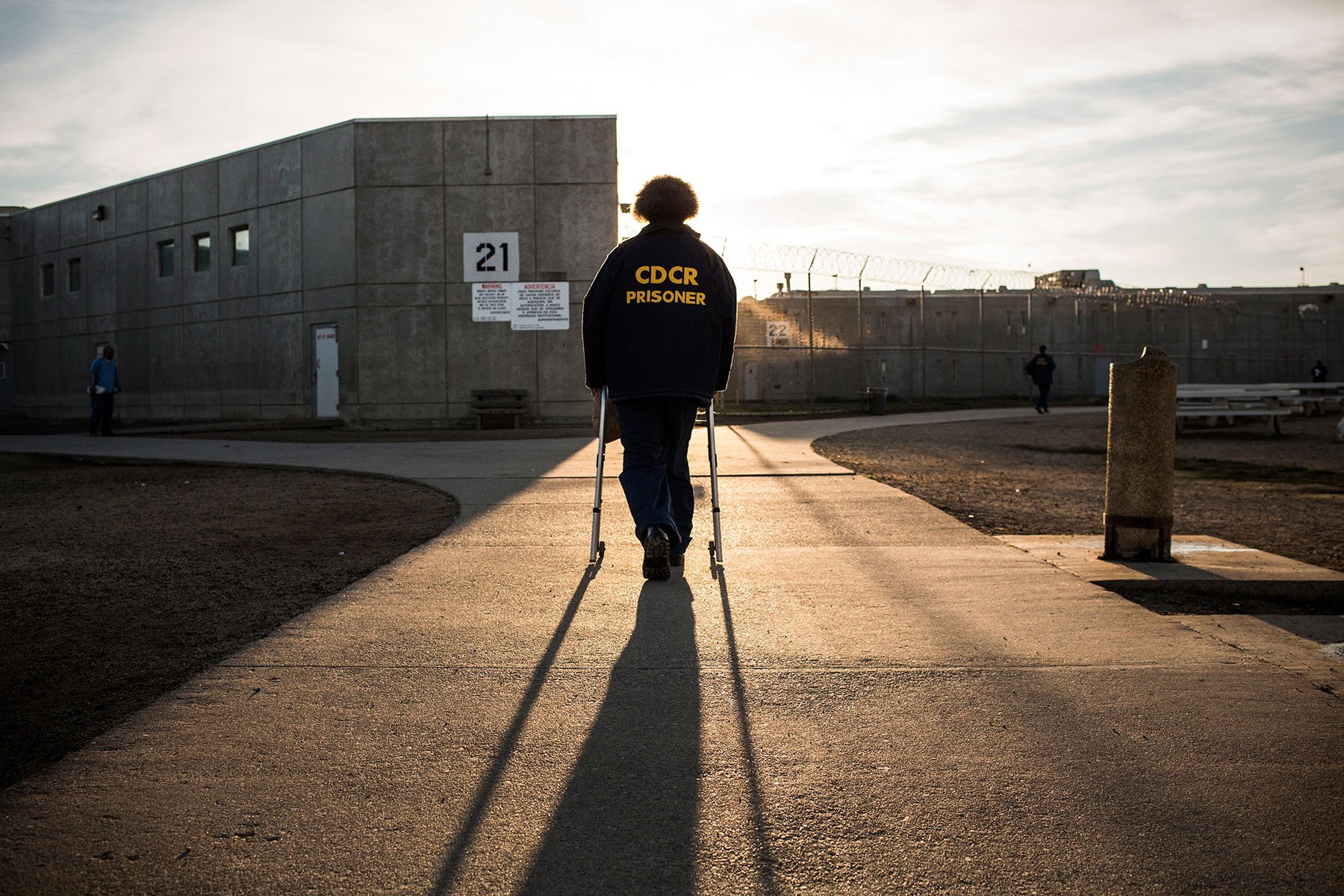
Henning: Crime has never gone back to the levels it was at in the ’80s and early ’90s. We’re not back there. But what we are seeing is that in many urban areas there’s an uptick in a few types of offenses — robberies, carjackings and shootings. So you’re seeing a slight uptick, but people start to feel unsafe because they’re high-profile incidents. And now you’re seeing the draconian policies again. You’re seeing the criminalization, again, of normal adolescent behavior.
Stroud: I don’t know that it would be fair to say that as a nation our federal policy has fallen back into the mold of 1994. I don’t think we’re living in the same sort of era in terms of policy. I do worry about the impulse to punish more at the first whiff of heightened crime.
Nunes: When it comes to domestic violence, there’s still a disconnect and underrepresentation of crimes being reported by persons of color and marginalized communities. So that still needs work. We still see systemic inequalities and bias or discrimination in reporting agencies, law enforcement, in the justice system.
Graber: Not all domestic violence survivors are White, middle class, cisgender, heterosexual women with college educations and mortgages. Some survivors may, as a result of being victims, be involved in the legal and criminal justice systems themselves. Some survivors are not in a position where calling law enforcement would make them safe, so we need to make sure that every victim has an avenue to safety that works for them.
Nable-Juris: The way that communities stay safe is by doing prevention work, is by investing in the community. Incarceration is not the solution to do that. In many ways, the people who are incarcerated are key contributors to that solution. Those are the people who can come home and connect with children and young folks and explain what they have experienced and serve as a support to prevent future crimes.
Scott: Gradually there’s more acceptance of an evidence-based approach [to crime]. One of the problems is that you just can’t afford the foolishness: just locking people up without doing anything about crime. The costs of incarceration have skyrocketed. What states are spending has just gone totally out of kilter. If they put some of that money into prevention and early intervention, education generally, afterschool programs, there would be much less crime. When you just put it all into longer sentences, you have a massive expense without any concurrent reduction in crime.
Sulton: The majority of people understand now that long-term solutions and meaningful investments are the way to make change. And although movements are cyclical — we expect a certain degree of backlash following a moment like 2020 or a moment like 2014 — it’s kind of wild that our local lawmakers still don’t feel the urgency, the necessity or the political support from their constituency to make the big changes that need to happen.
Eddie Ellis, co-director of outreach and member services at the Campaign for the Fair Sentencing of Youth: A lot of communities are trying to do the right thing with programs and support, but not the government. There’s many programs out here that are doing transformative, healing work, restorative justice work, but a lot of courts are not using those resources.
In our organization, transformative healing — which is a part of restorative justice — is about trying to bring healing to people and to help them find space to heal. You find a lot of children in these populations that have been sexually assaulted, verbally abused and in unhealthy environments that they have no control over.
In Maryland, they just passed a bill to lower the age so that 10 year olds can be arrested and charged with crimes. So you tell me: How far have we come?


